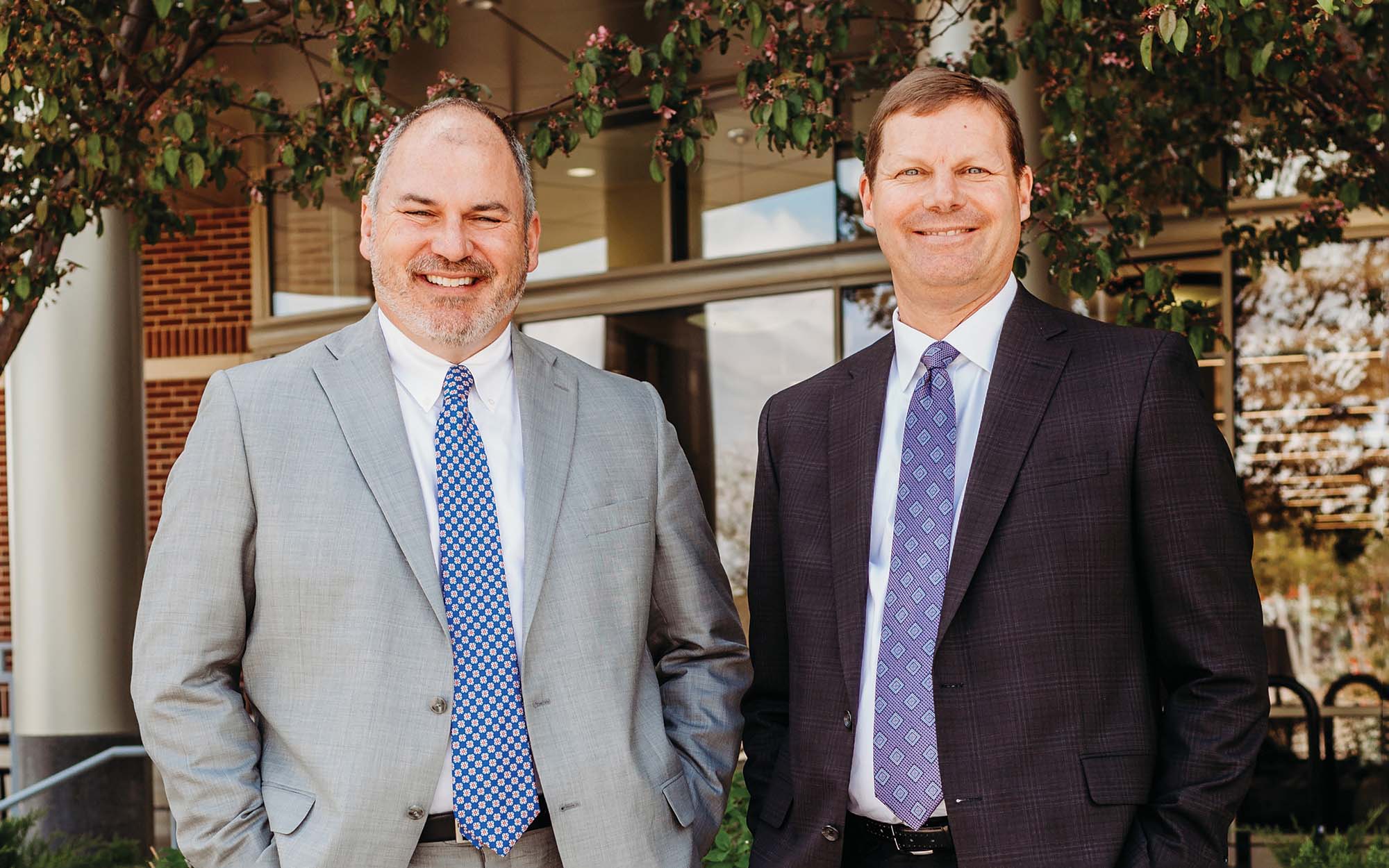One of the most important duties of a community bank’s board is developing a plan for how to select and transition to a new CEO.
“It’s the single most important responsibility of a board of directors to make sure they identify the strongest and most appropriate leader for the next phase of the bank,” says Alan Kaplan, founder and CEO of Kaplan Partners, a retained
executive search and board advisory firm in
Wynnewood, Pa.
Deciding the future leadership of your community bank can feel daunting—or even unnecessary if your current CEO is happy and successful in their position. But your bank’s future depends on having a workable plan in place for the inevitable time when your CEO steps down.
Here’s a step-by-step playbook to help your board craft and execute a viable succession plan.
1. Start early
When management teams don’t plan for succession, they may be forced into a reactive mode with limited time to make decisions. Instead, you should think of succession planning as a long process that allows for thoughtful consideration, says Brad M. Bolton, president and CEO of $183 million-asset Community Spirit Bank in Red Bay, Ala., and immediate past chairman of ICBA.
For example, nearly a decade before Preston L. Kennedy retired as president and CEO of $361 million-asset Bank of Zachary in Zachary, La., he had his eyes on a would-be successor: Mark S. Marionneaux, who was working for another bank at the time.
“He was a very personable young man, his wife was a pharmacist, his family was well-known in the community and he was very involved in their children’s school activities,” says Kennedy, who is also an ICBA past chairman. “For a community bank, all that means something.”
Realizing Marionneaux’s potential, Kennedy hired him as a lender, expanding duties throughout the years with the goal of him eventually becoming the bank’s next leader.
You may well have a rising star who can be groomed for the top job. But don’t be afraid to look outside of the bank’s current emerging leaders.
“Board and management must think and meet with consultants who are there to support the bank for the long term, not just to meet to advocate to sell the bank.”–Brad Bolton, Community Spirit Bank
“Just having the right people is tough, because a lot of community banks are having difficulties these days in attracting and retaining talent,” says Greyson E. Tuck, president of Gerrish Smith Tuck Consultants and Attorneys in Memphis. “It’s not uncommon for a community bank to go outside the bank for a successor.”
2. Decide the future of the bank
“The first thing I would say to people [is], ‘What’s the business plan and the timeline for succession?’” Kaplan says. “The decision of whether or not to sell the bank needs to be put in context of the strategy for the next few years.”
If your community bank decides to remain independent, choose a consultant who has a track record of providing a way for banks to do so, Bolton recommends. “Board and management must think and meet with consultants who are there to support the bank for the long term, not just to meet to advocate to sell the bank,” he says.
Then boards should consider establishing an employee stock ownership plan (ESOP), KSOP (a 401(k) combined with an ESOP) or some other mechanism that can reward current leaders while setting up future leaders with a potential path for ownership interest, Bolton says.
3. Assess potential candidates
“I believe really strongly that strategy informs profile,” Kaplan says. “Where the bank is heading determines the profile of the next CEO of the company.”
While your board may desire to “clone” the existing CEO, that person’s skill set may not necessarily include the skills needed to take the bank to the next level, he says. For example, a bank furthering its digitization strategy may need a more tech-savvy leader. In addition, all banks increasingly need someone well-versed in enterprise risk management, a more holistic view of mitigating risk across the entire organization.
When assessing potential would-be successors internally, bank boards often run a search for professionals outside their institution to have candidates for comparative purposes, Kaplan says.
Having industry experience and ties to the local community are always desirable traits for a CEO, but any next leader should be “sincere, reliable, compassionate and holistically caring—more interested in the group than they are in themselves,” or else the bank’s future could suffer, says C. Phillip Buffington Jr., community bank team leader and partner at the Jackson, Miss., office of Adams and Reese LLP.
4. Prepare would-be successors
Gradually give would-be successors more responsibilities, particularly in areas of the bank in which they have little to no prior experience, Tuck says.
“If they come from the operations side of the bank, they may need experience in lending and also working out some problem credits,” he says. “The loan portfolio is a bank’s biggest asset and also greatest source of risk, so the individual definitely needs to get experience there.”
At the Bank of Zachary, Marionneaux gradually took on more responsibility both across the organization and on projects in the community to gain more visibility, Kennedy says. “It became clear to people in and out of the bank that he was going to be the next leader.”
5. Clearly communicate your plan
It’s important that your plan is transparent for both employees and customers, Buffington says.
“If you’ve got a strong CEO who's been there for a long time, people look at that individual as the bank and wonder how you're going to replace that person,” he says. “You need to show that you’ve got longevity and that institutional knowledge is not going to be lost.”
That’s one of the biggest things that Kennedy and Marionneaux got right, the former says.
“At many banks, it’s just presumed that a particular person would succeed, but if it’s not expressly communicated, there can be misunderstandings, confusion, hurt feelings and a lot of times separation, and that’s no good for anybody,” Kennedy says. “But we actually talked about it—timelines, mileposts—and we talked about it frequently.”
6. Update your plan regularly
“You can have the greatest plan in the world in 2023, but if by 2024 you’re just resting on your laurels and haven’t gone back and looked to see if it needs modifications, then it will get outdated,” Buffington says. “There are going to be changes not only from a human capital standpoint but also technology changes—things you didn’t address initially but now you may need to address to make sure you have the right people in place to manage those changes.”
Community banks need both a “normal” succession strategy and an emergency succession strategy, Tuck says. They should not only identify someone who can be groomed long term to eventually take the reins but also someone who could immediately take the reins if the CEO suddenly leaves, even if it’s a temporary role.
“We had a few surprises the last few years, and fortunately we were prepared. In one case, we identified where technology could be a factor in the replacement, along with elevating two employees.”–Kathy Underwood, Ledyard National Bank
At $742 million-asset Ledyard National Bank in Hanover, N.H., senior managers are asked to give a two-year notice, if possible, though circumstances sometimes change their plans, says Kathy Underwood, CEO of the bank.
“We had a few surprises the last few years, and fortunately we were prepared,” Underwood says. “In one case, we identified where technology could be a factor in the replacement, along with elevating two employees. In more than one case in senior management, we had to go outside, which is not unusual in a bank our size. But we are fortunate that our culture is one that is attractive to candidates, and we can’t underestimate how that helped us bring in top‑notch talent.”
7. Plan for the transition
Bank of Zachary’s original plan was for Marionneaux to become president while Kennedy remained CEO for two to three more years. But they learned from a bank consultant that such a transition should never last more than a year, as it could lead to staff confusion and the possibility of conflicts, Kennedy says.
Instead, he transitioned to president emeritus, just offering advice, but that arrangement became virtual due to the pandemic shutdowns. By the end of 2021, Kennedy had retired altogether.
“One thing a lot of outgoing CEOs don’t get right, but it is common sense, is to take less compensation when you’re taking less responsibility and the successor is taking on more responsibility,” he says. “If the outgoing CEO is making fewer decisions, they should be paid less. That’s fairer for everyone concerned.”
Moreover, during the transition period, boards need to support the incoming CEO’s decisions, even if it’s not what the outgoing CEO would do, Buffington says.
Tuck adds: “Unless you think the new direction is really just wrong—if they are just going to walk you off the cliff—deference needs to be given to the new individual’s decision. If you undermine the person that you charged with this responsibility by deferring to the former CEO, then the new CEO will think they were just put there to be a figurehead.”
Sometimes a clean break is best, so there’s no misgivings about who is in charge, he says. The board must decide how the bank will make the transition in a way that is the least disruptive and the most beneficial.
Kennedy agrees that if the outgoing CEO does stay on for a while, they should not second guess the replacement. “If you’ve hired the right person, you’ve got to let them make their own decisions, and if they do things differently than you, do not carp, throw stones, roll your eyes or any other thing that would undermine their authority,” he says. “A CEO transition is a new day and a new relationship.”
What about succession planning for family-owned banks?
Planning for succession at family-owned banks needs to start even earlier, as emotional issues surrounding the eventual selection may need to be worked out well ahead, says C. Phillip Buffington Jr., community bank team leader and partner at the Jackson, Miss., office of Adams and Reese LLP. Would-be successors also need time to secure additional training and education.
Families need to work their way through questions of economic ownership and operating control, particularly if stock ownership is diffused among many dozens of people across three or four generations, says Alan Kaplan, founder and CEO of Kaplan Partners. If there is no clear successor within the family, or no one wants the job, families may decide to select someone from outside the family to be CEO—or to sell the bank altogether.
Years ago at Community Spirit Bank, the majority owner had no children, so he asked then-president Billy Bolton—the father of current president and CEO Brad Bolton—to find a way to keep the bank independent “and buy [the owner’s] stock over time and use that to do good for the community,” say Brad Bolton.
His father formed an ESOP and eventually acquired the majority owner’s shares. Community Spirit Bank is now roughly 58% ESOP-owned and controlled, and very closely held.
“Those vehicles can really be beneficial to rewarding a family for taking a risk to start a bank, build it and then pass it on to the next generation to keep it independent for its community,” Bolton says.
Succession planning is a team effort
The CEO position is a critical one when succession planning, but don’t forget about the rest of the management team. In fact, you should be building a strong second and third bench.
“Every department should develop plans for what would happen if any person ‘got hit by a truck,’” says Brad Bolton, president and CEO of Community Spirit Bank. “Who would fill their shoes? That will help develop the plan for middle managers and senior managers and then lead to plans for who will lead in executive management.”
In 2022, Ledyard National Bank launched an emerging leader program for those it identified as being leaders within two to four years, CEO Kathy Underwood says. The community bank typically begins to plan five years out for all positions and develops individual development plans for every potential future leader within the organization.
At $607 million-asset FNB Bank in Oxford, Miss., planning for internal management succession is ongoing, and cross-training is essential, says CEO Johnny Barrett.
“One of the keys for us is versatility among all of our key managers,” Barrett says. “It’s important for our key managers not to stay in their particular silo and know what else is going on in the bank.”
As such, FNB Bank’s CFO is familiar with what the chief credit officer does, as well as the duties of the chief risk officer, lending operations officer and deposit operations officer, he says.
Barrett encourages key managers to have a backup or two under them for vacation, sickness or any extended leave. That way, the community bank can keep operating at full capacity during a leader’s absence.
“Right now, there are probably three or four people who are capable and could probably replace me,” Barrett says. “It just depends on what particular skills the board will want to emphasize.”






